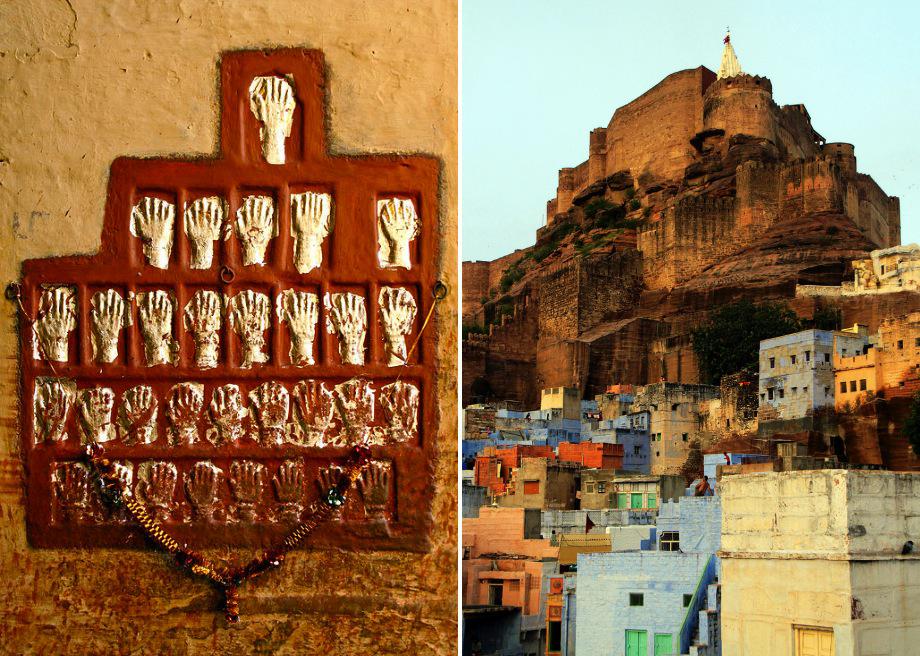Sati Handprints
Sati Handprints is unforgettable. Sati also called suttee is a historical Hindu practice that was followed in India around 510 CE. Sati is a historic Hindu funeral practice where the widow women sacrifice her life by sitting on her husband’s funeral fire.
According to mythology sati is Lord Shiva’s wife who burnt herself to protest against her father who never respected her husband. While burning she prayed to be reborn as shiva’s wife again. Her new form was called as Parvati.
Scripts describe that when the husband died the woman was dressed in her wedding clothes and sat on her husband’s funeral fire and burnt alive with the dead body.
Some women were forced and pushed into the funeral fire with her husband’s body. Scripts also say that woman was made to lay down or some jumped into the burning fire with her husband’s dead body.

One such incident that took place in the period of Raja Man Singh. After the death of Raja Man Singh, his fifteen wives sacrificed themselves into the fire of their husband’s funeral fire.
The fifteen queens left their handprints before jumping into the fire. These handprints are called as sati handprints. The handprints of these fifteen women are placed in Mehrangarh Fort in Jodhpur.
This fort guarded by a series of seven gates. The handprints of the fifteen queens are placed on the innermost gate on the left side of the fort. This gate is called Loha Pol or ‘iron gate’.
These 15 handprints left by the queens before they sacrificed themselves into the burning fire with their husband’s dead body are known as sati marks. These are most likely to be dated 1843 death of Maharaja Man Singh.

The sati Hindu custom was widely practiced in the Rajasthan area of India. This act of sacrificing themselves into the fire with their husband’s dead body was seen as the act of immense devotion and faith.
In 1731, on the death of Maharaja Ajit Singh, his 6 wives and 58 concubines sacrificed themselves in the funeral fire. The sati practice horrified the western cultures and the Britishers but no official step was taken against sati act.
However, the Indian government passed the commission of sati (prevention) act in 1987. Sati act is now condemned and strictly opposed and there is strict action against this practice.



